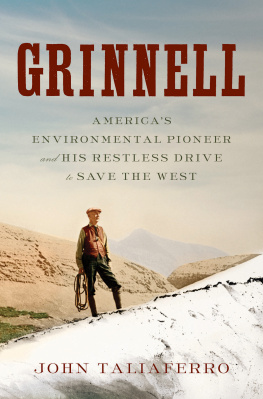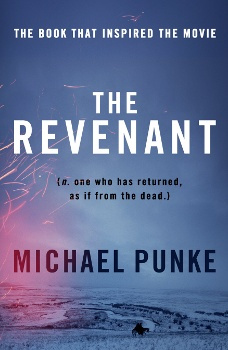John Taliaferro - Grinnell: America’s Environmental Pioneer and His Restless Drive to Save the West
Here you can read online John Taliaferro - Grinnell: America’s Environmental Pioneer and His Restless Drive to Save the West full text of the book (entire story) in english for free. Download pdf and epub, get meaning, cover and reviews about this ebook. year: 2019, publisher: Liveright, genre: Non-fiction / History. Description of the work, (preface) as well as reviews are available. Best literature library LitArk.com created for fans of good reading and offers a wide selection of genres:
Romance novel
Science fiction
Adventure
Detective
Science
History
Home and family
Prose
Art
Politics
Computer
Non-fiction
Religion
Business
Children
Humor
Choose a favorite category and find really read worthwhile books. Enjoy immersion in the world of imagination, feel the emotions of the characters or learn something new for yourself, make an fascinating discovery.
- Book:Grinnell: America’s Environmental Pioneer and His Restless Drive to Save the West
- Author:
- Publisher:Liveright
- Genre:
- Year:2019
- Rating:5 / 5
- Favourites:Add to favourites
- Your mark:
Grinnell: America’s Environmental Pioneer and His Restless Drive to Save the West: summary, description and annotation
We offer to read an annotation, description, summary or preface (depends on what the author of the book "Grinnell: America’s Environmental Pioneer and His Restless Drive to Save the West" wrote himself). If you haven't found the necessary information about the book — write in the comments, we will try to find it.
Grinnell was born in Brooklyn in 1849 and grew up on the estate of ornithologist John James Audubon. Upon graduation from Yale, he dug for dinosaurs on the Great Plains with eminent paleontologist Othniel C. Marshan expedition that fanned his romantic notion of wilderness and taught him a graphic lesson in evolution and extinction. Soon he joined George A. Custer in the Black Hills, helped to map Yellowstone, and scaled the peaks and glaciers that, through his labors, would become Glacier National Park. Along the way, he became one of Americas most respected ethnologists; seasons spent among the Plains Indians produced numerous articles and books, including his tour de force,The Cheyenne Indians: Their History and Ways of Life.
More than a chronicler of natural history and indigenous culture, Grinnell became their tenacious advocate. He turned the sportsmens journalForest and Streaminto a bully pulpit for wildlife protection, forest reserves, and national parks. In 1886, his distress over the loss of bird species prompted him to found the first Audubon Society. Next, he and Theodore Roosevelt founded the Boone and Crockett Club to promote fair chase of big game. His influence among the rich and the patrician provided leverage for the first federal legislation to protect migratory birdsa precedent that ultimately paved the way for the Endangered Species Act. And in an era when too many white Americans regarded Native Americans as backwards, Grinnells cries for reform carried from the reservation, through the halls of Congress, all the way to the White House.
Drawing on forty thousand pages of Grinnells correspondence and dozens of his diaries, Taliaferro reveals a man whose deeds and high-mindedness earned him a lustrous peerage, from presidents to chiefs, Audubon to Aldo Leopold, John Muir to Gifford Pinchot, Edward S. Curtis to Edward H. Harriman. Throughout his long life, Grinnell was bound by family and sustained by intimate friendships, toggling between the East and the West. As Taliaferros enthralling portrait demonstrates, it was this tension that wound Grinnells nearly inexhaustible spring and honed his visiona vision that still guides the imperiled future of our national treasures.
John Taliaferro: author's other books
Who wrote Grinnell: America’s Environmental Pioneer and His Restless Drive to Save the West? Find out the surname, the name of the author of the book and a list of all author's works by series.










